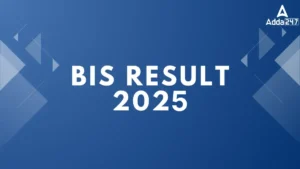Directions (1-5): Read the following information carefully and answer the following questions.
Eight persons A, B, C, D, E, F, G, and H like eight different cars viz. BMW, Audi, Toyota, Tesla, TATA, Ford, MG, and KIA but not necessarily in the same order. They all likes different mobile viz. OPPO, VIVO, Karbonn, JIO, Apple, NOKIA, REDMI, and Realme but not necessarily in the same order.
E does not like OPPO mobiles. F does not like OPPO and VIVO mobiles. The one who likes Karbonn mobile likes KIA Cars. D likes JIO Mobiles. The one who likes Apple mobile does not like MG, BMW, and Audi Cars. H likes REDMI Mobile. Neither B nor C likes Apple mobiles. F likes Audi Car and E likes BMW Cars. G does not like Karbonn mobiles. The one who likes NOKIA mobiles likes TATA Cars. C does not like TATA, Ford and KIA Cars. The one who likes MG Cars does not like JIO and OPPO Mobiles. G does not like Tesla and Ford Cars.
Q1. Who among the following likes Ford Car?
(a) B
(b) A
(C) D
(d) H
(e) None of these
Q2. Who among the following likes Apple Mobiles?
(a) A
(b) G
(C) The one who likes Toyota Car
(d) The one who like Tesla Car
(e) Both (b) and (c)
Q3. Who among the following likes Tesla Car?
(a) A
(b) G
(c) C
(d) D
(e) None of these
Q4. Which of the following information is correct about A?
(a) A likes Apple mobiles
(b) A likes Karbonn mobiles
(C) Both (a) and (b)
(d) A likes Toyota Car
(e) None of these
Q5. Four of the following five are alike in a certain way based on a group, which of the following does not belong to that group?
(a) C- OPPO
(b) A- Karbonn
(C) A- KIA
(d) H- MG
(e) B- Realme
Directions (6-7): In making decisions about important questions, it is desirable to be able to distinguish between “Strong” arguments and “Weak” arguments in so far as they relate to the question. “Strong” arguments are those which are both important and directly related to the question. “Weak” arguments are those which are of minor importance and also may not be directly related to the question or may be related to a trivial aspect of the question.
Instructions: Each question below is followed by two arguments numbered I and II. You have to decide which of the arguments is a strong argument and which is a weak argument. Give answer
(a) if only argument I is strong.
(b) if only argument II is strong.
(c) if either I or II is strong.
(d) if neither I nor II is strong ; and
(e) if both I and II are strong.
Q6. Statement: Should only reputed NGOs be authorized to distribute the commodities to the public under the programme of Public Distribution System (PDS)?
Arguments:
I. Yes, the move will be helpful to implement the programme more effectively and will keep a tab on various problems like black marketing of the commodities supplied under PDS.
II. Yes, NGOs have helped government on many occasions.
Q7. Statement: Should vacation of Central government employees be reduced?
Arguments:
I. Yes, increase in number of working days will speed up the work done by the Central government employees, as a result of which people will get service from these employees in reasonable time.
II. Yes, vacation makes the employees lazy and reduces the stamina of employees to work for long hours.
Directions (8-10): Study the following information carefully and answer the questions given below.
P%Q (32)- P is 8m in north of Q
P$Q (24)- P is 6m in south of Q
P#Q (48)- P is 12m in east of Q
P&Q (16)- P is 4m in west of Q
D#H (12), L%O (28), P&T (44), M%L (4), D&I (36) I$J (64), W&O(44), J&P(4), T%W(40)
Q8. What is the direction and shortest distance of point L with respect to point I?
(a) 2√349m, North-East
(b) 28m, North-East
(c)√789m, South-West
(d) 27m, North-East
(e) None of these
Q9. What is the direction of point J with respect to point M?
(a) South-east
(b) North-east
(c) South
(d) North
(e) None of these
Q10. If Point S is 7m south of point J, then what is the shortest distance between S and H?
(a) 14m
(b) 17m
(c) 11m
(d) 15m
(e) None of these
Solutions

S6. Ans.(a)
Sol. Only I is strong because it will make the PDS programme more meaningful and purposeful. II is weak because it adds nothing substantial to the statement.
S7. Ans.(a)
Sol. II is weak argument because it wrongly assumes that vacation makes employees lazy and less hardworking. I is strong because lesser vacation ensures higher working days. And no doubt increase in the number of working days will reduce the work pending.
Solutions (8-10):
Sol.

S8. Ans.(e)
S9. Ans.(e)
S10. Ans.(d)
Click Here to Register for Bank Exams 2021 Preparation Material





 GA Capsule for SBI Clerk Mains 2025, Dow...
GA Capsule for SBI Clerk Mains 2025, Dow...
 The Hindu Review October 2022: Download ...
The Hindu Review October 2022: Download ...
 BIS Result 2024-25 Out for ASO, JSA and ...
BIS Result 2024-25 Out for ASO, JSA and ...





